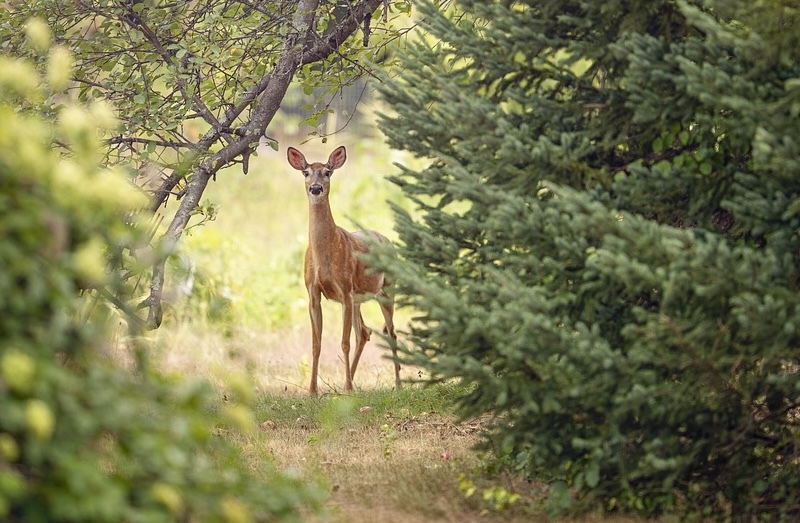Elderberry or Sambucus are bushy deciduous shrubs with beautiful bunches of white blooms that produce dark-purplish to black berries. The berries are highly beneficial when used in tinctures, jellies and other edible delicacies.
The elderberry plants are native to North America and thrive in zones 3-9. Although no plant is always safe from hungry passersby, the elderberry is less likely to be appetizing to nearby deer. Grasses, vines, fruits and nuts tend to be of preference to hungry deer. In contrast, birds, rodents and bears may be attracted to the berries on the shrub in the summer and early fall.
According to Rutgers University this plant is Rarely Damaged on their rating scale from Rarely Damaged to Frequently Severely Damaged. If deer damage is a concern of yours, see below for several options to aid in damage prevention.
| Rarely Damaged |
| Seldom Severely Damaged |
| Occasionally Severely Damaged |
| Frequently Severely Damaged |
Keeping Deer Away From Elderberry
If deer are prevalent in your area and you’re worried about potential damage, have no fear- there are options to protect your elderberry! One popular option is to apply ready to use repellant that deters deer by irritating their sense of smell. Would you rather create your own concoction?
Steeping pungent herbs such as thyme, oregano and rosemary in warm water and applying on the ground surrounding the bush as needed depending on rainfall can be a natural repellant. You may even benefit from planting these herbs around the perimeter of your elderberry bush. Planting marigolds during the early summer and fall months can help deter deer, as well. If you’re looking for a more permanent and lower maintenance option, fencing around the bush will offer a sturdy solution.
Will Elderberry Come Back After Deer Eat Them?
In the case that your elderberry does become a snack for your local deer, wait until the bush has become dormant and has lost its leaves. Ensure to use sanitized pruners to prevent spreading disease from previous pruning.
Next, examine the damaged limbs and remove them at the base of the trunk. Three years of stem/limb growth is the peak production for each elderberry bush, so this is a great time to remove some of the growth that appears to be older (thick stems/limbs and stems that are traced with growth marks like scars). Leave about eight stems to allow proper growth when the elderberry comes out of dormancy.

If the amount of damage is severe and you wish to increase growth and production for the next growing year, apply fertilizer in early spring. You can apply 1/8lb of ammonium nitrate per year of growth up to 1lb (i.e. two years of growth = 1/4lb). You may also use 10-10-10 at a rate of 1/2lb per year of growth up to 4lbs (i.e. two years of growth = 1lb).
Sources: Rutgers New Jersey Agricultural Experiment Station ‘Landscape Plants Rated by Deer Resistance’ 2018
 |
Author Chris Link - Published 01-15-2022 |
